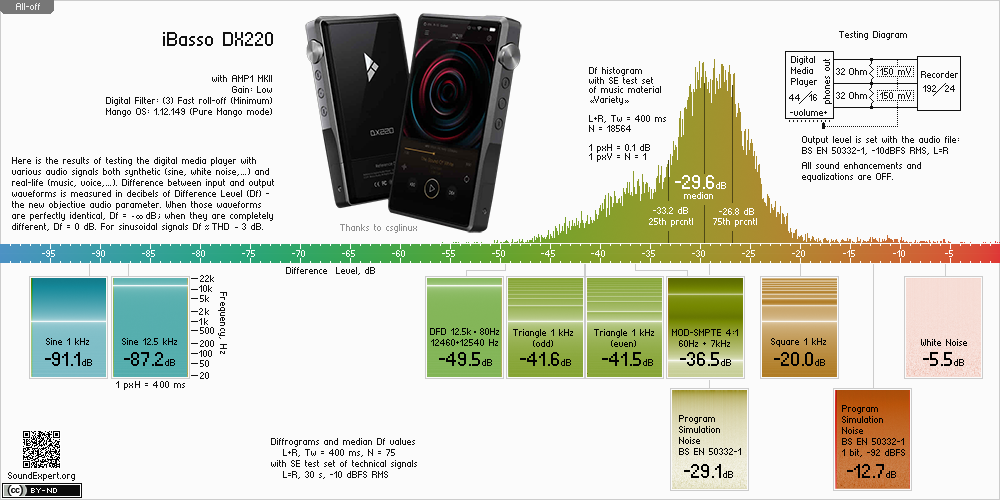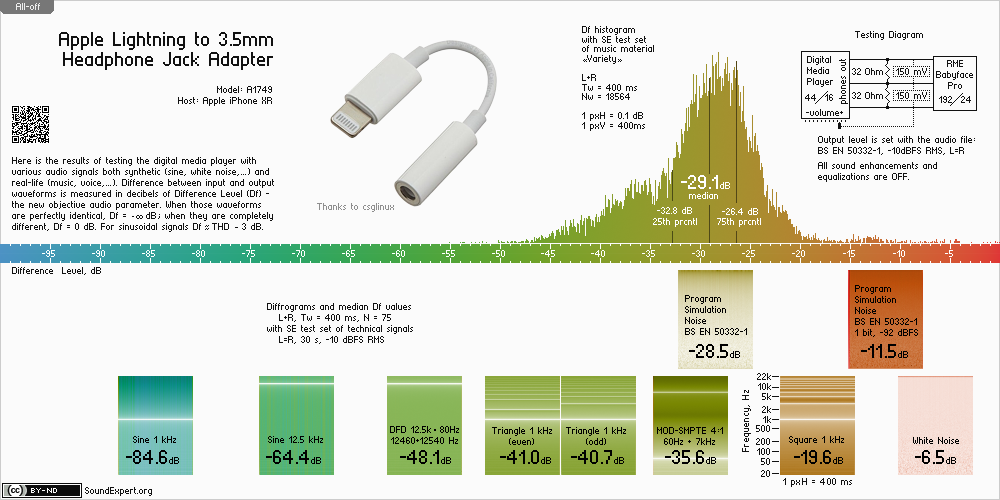solderdude
Grand Contributor
Yes that looks like great software. I see in that thread I linked to he incorporated Serge's Df metric into DeltaWave after a discussion on how to calibrate their algorithms to match. I believe Serge's is still more accurate as it finds a single global minimum when iterating over time shifts to eliminate drift, but it seems DW's computation is faster, if less accurate.
Serge's software also provides 'similarity space' plots, plotting devices with a similar distortion profile when playing real music closer together in a 3D graph, which is very interesting. For example, it plots the ~$1000(!) iBasso DX220 quite close to the $9 Apple dongle in similarity space:

As well as giving them a very similar Df value of -29.6 and -29.1 dB respectively when playing real music (the similar distortion profile can also be seen from the very similar Df histogram shape):


This is despite the fact the DX220 measures significantly better in the sine tests, which is supported by your measurements of the Apple dongle and the DX200 (assuming the latter is similarly performing to the DX220), demonstrating a SINAD difference of 9 dB, as well as showing they have different THD profiles:


Serge talks about such differences in standard synthetic test measurements yet similarity when playing real music (what he calls the 'm-signal') here:
Obviously order of harmonic distortion does matter in terms of audibility/objectionability (odd>even, higher>lower) as research shows, so individual THD tests are still useful for a finer grained judgement of sound quality, but it seems the Df metric (calculated using either Serge's or the DeltaWave software) would be a better measure of overall transparency and so sound quality than SINAD, seeing as it reveals the actual level and profile of distortion when playing the real music we use the DUTs to listen to, as opposed to just artificial test tones.
Funny how the $2500 Chord Hugo competes with the $100 DAP M0.
M0 = 8mW in 300 Ohm where the Hugo2 is 94mW in 300 Ohm.
Below 8mW this and all other DAPs will be indistinguishable from each other.
One can start to wonder how useful this test really is.
